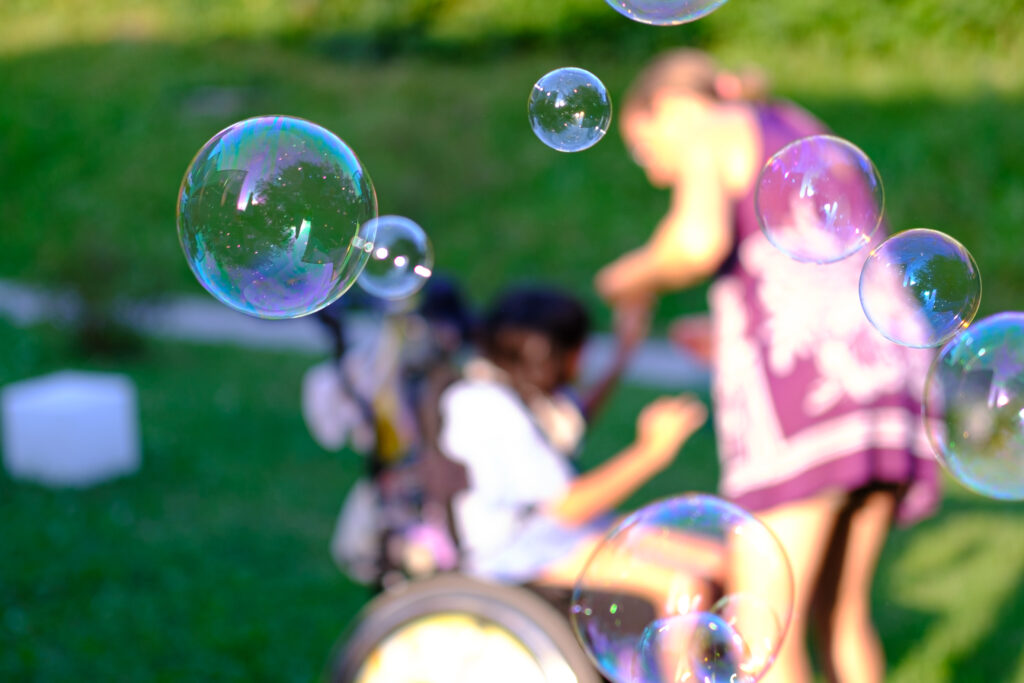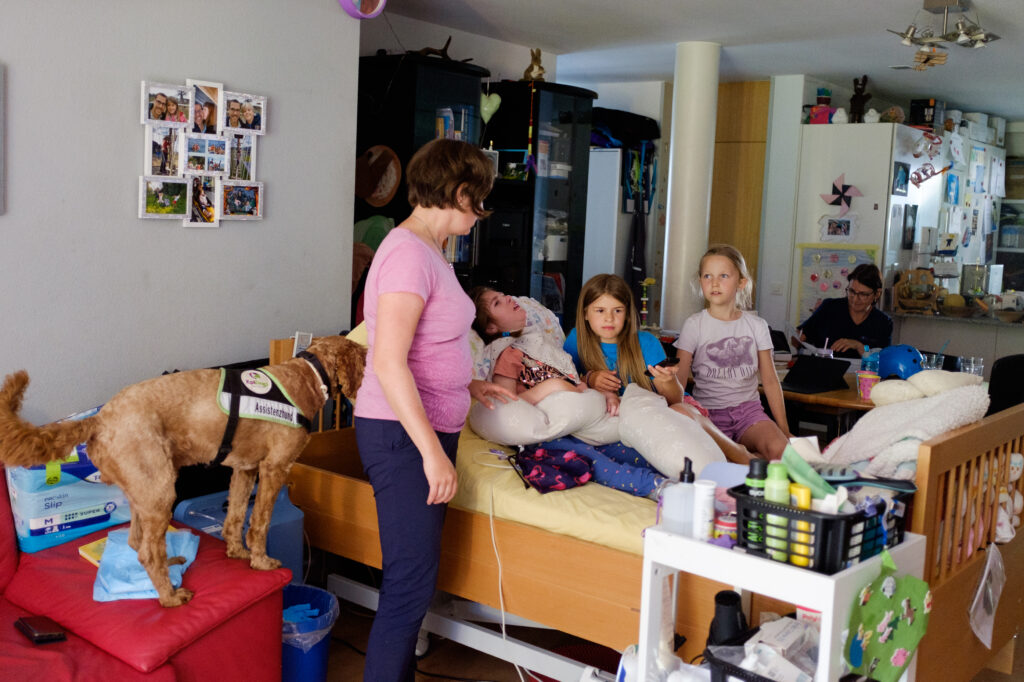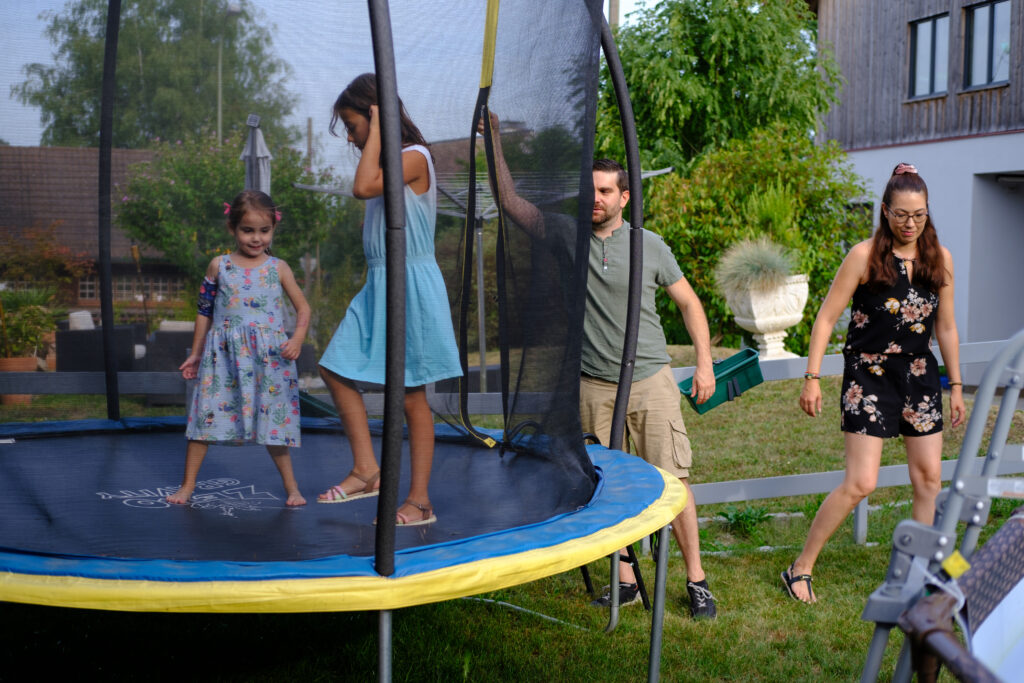
Registration: Your way to us
Would you like to plan a stay for your child and your family at Flamingo Children’s Hospice from 2026 and get to know us better?
Contact us without obligation using the form below – we will be happy to get back to you. When planning your stay, we will take your personal needs and preferred dates into account.
You can reach us by telephone on: +41 (0) 44 811 77 77.
We are happy to arrange an introductory meeting before a concrete application is made with an exchange of the necessary health documents. The final admission decision is based on a medical referral and Flamingo’s capacity. To the flyer.
Please complete the following form:

The Flamingo children’s hospice will accommodate up to eight children and young people at its Fällanden site in the canton of Zurich. On a beautiful plot, close to Lake Greifensee and with a view of the Alpine panorama, families will be able to benefit from this unique offer from 2026. The children’s hospice will be a special place of support and “recharging your batteries” – with the opportunity to exchange ideas with others who are equally affected: A house where people live, laugh and play, but where dying and mourning also have their place.
The holistic care and support, combined with the appropriate infrastructure, should enable those affected to take a break from their exhausting everyday lives. This is not just about caring for the sick child, but also about the needs of the parents and siblings. The Flamingo Children’s Hospice offers a unique stay for the whole family:
holistic | supportive | unique.
The Flamingo Children’s Hospice was initiated by the Swiss Children’s Hospice Foundation.
What exactly is a children’s hospice? Questions like these and helpful answers can be found in the FAQs!
New sibling offer
From fall 2025, the Flamingo Children’s Hospice will be offering a sibling group in the Zurich area in collaboration with the Raum für Geschwister (VRG) Schweiz association. Here, children who have a brother or sister with a disability or life-limiting illness will be accompanied by specialists from the psychosocial field.
Selina Boppart and Maya Caviezel have successfully completed further training to become “Sibling Specialists” at the Swiss Association for Siblings (VRG). Information about the group program:
- When: Usually on the last Monday of the month, from 13:30 -15:30
- Who: Siblings of primary school age from the Zurich area
- Where: Flamingo Children’s Hospice, Fällanden
Dates for 2025/ 2026
- 2025: 27.10. and 24.11.
- 2026: 26.01. | 02.03. | 30.03 | 03.04. | 18.05. | 29.6.2026

Exchange with peers who have similar experiences!
- We offer the right setting
- Playful and creative activities
- Support from experienced specialists
Interview with the initiators
What is sibling work?
Sibling work includes targeted support for children whose brother or sister is living with an impairment or life-shortening illness. The services are geared towards the specific emotional and social needs of these children. The aim is to recognize and promote their individual strengths and thus strengthen their emotional well-being and mental health in the long term.
Why is this work so important?
The first Swiss sibling study, which was conducted by Lucerne University of Applied Sciences and Arts on behalf of the Raum für Geschwister association and published in March 2025, clearly shows that 33% of the siblings surveyed experience a high level of psychological stress. Siblings grow up under challenging conditions, often with a great sense of responsibility and limited attention to their own needs.
What does the offer actually look like?
From fall 2025, an afternoon group for siblings of primary school age from the Zurich area will take place once a month on the premises of the Flamingo Children’s Hospice in Fällanden. The meetings offer a protected environment in which the children can talk to their peers. They learn that they are not alone in their situation and that their own needs are the focus.
The procedure:
After a preliminary telephone discussion with the parents, the children come together in the group under professional guidance. Through creative and interactive elements, they are given the opportunity to exchange ideas and talk about topics that concern them. The focus is on their own experiences and needs with the aim of strengthening their resilience.
In the long term, further groups are planned for different age groups and thematic focuses.
What role does the “Raum für Geschwister” association play?
The association contributes its many years of expertise and provides support through professional guidance, supra-regional networking and by pooling information. The various services are made easily accessible to the affected families via a platform and are recommended directly in the event of personal inquiries. The cooperation makes it possible to develop the services professionally and sustainably, draw attention to the special situation of siblings, communicate the services and thus support as many affected families as possible. Professionals will find a competent point of contact, receive information and can receive further training on the topic. Affected siblings and their families receive direct support with various offers at the respective developmental age.
In conversation with:
- Cornelia Mackuth-Wicki, Vice-President VRG Switzerland, nursing expert BScN
- Maya Caviezel, Lic. Phil, Specialist Psychologist for Psychotherapy FSP
- Selina Boppart, teacher, responsible for the psychosocial area
“Sibling group flyer” for families and siblings!
“Flyer sibling group” for donors: inside!
This valuable offer is largely realized through donations!

The services offered at the children’s hospice are carefully tailored to the needs of the sick children and their families. Various therapies and specialized paediatric palliative care (sPPC) are applied in a holistic concept by a multi-professional team.
Specialized pediatric palliative care
Paediatric palliative care is provided by specifically trained nursing staff. The focus is on the well-being and health of the children concerned. The nursing team will take in and care for children with life-limiting illnesses and their families in various life situations at the children’s hospice:
- Registered by children’s hospitals, pediatricians, children’s Spitex
- from home, for pediatric, palliative care
- from home, in the end-of-life phase
- after discharge from the children’s hospital for transitional care
- if the care provided by outpatient services is no longer sufficient
Pediatric palliative care: current studies and publications
Eva Bergsträsser, Jürg C. Streuli (12.2024): Pediatric palliative care – Where are we now? Where are we going? Article
SPhAERA study team (2024). When a child is terminally ill – Results of the Swiss
SPhAERA study. Institute of Nursing Science, University of Basel and Competence Center for Pediatric Palliative Care, University Children’s Hospital Zurich. doi:10.5281/zenodo.12804047. LINK
Ziegler, Sarah; Laubereau, Birgit (11.2023): In-depth investigations into pediatric palliative care needs in Switzerland. Report for the attention of the Federal Office of Public Health. Report
Pelikan Study (2016). How children die in Switzerland. Eva Bergsträsser, Pediatric Palliative Care Children’s Hospital Zurich, Eva Cignacco, Department of Nursing Science, University of Basel. Study
Medical care
Most of the children affected are registered by the specialists providing care and are already involved in pediatric, palliative outpatient care. This medical care is continued at the Flamingo Children’s Hospice. If an affected child does not have a PPC care team, one will be set up by the children’s hospice. Medical questions are usually clarified with this team of doctors.
For acute questions and problems, the children’s hospice provides a quickly available pediatric palliative care specialist and a 24/7 specialist background service, covered by the sPPC team of the University Children’s Hospital Zurich (Kispi).
Therapies and other offers
The holistic approach of paediatric palliative care includes not only nursing and medical care, but also various therapies. At the beginning of a stay at the children’s hospice, the needs and wishes are discussed in detail with the families.
A pediatric physiotherapy specialist will be available on a regular basis for the well-being of the children. Further therapies are offered according to need and possibility, e.g:
- art therapy
- music therapy
- animal-assisted therapy
- Talk therapy
- Family grief counseling
- Snoezelen
- Dream doctors
- Pastoral care
- Sibling time

Psychosocial and socio-educational services
The services offered at the children’s hospice are not only centred around the child with a life-limiting illness, but also their parents, siblings, and relatives. The burden is often overwhelming and very complex. The high level of care required causes psychological and physical problems, interpersonal relationships suffer, and financial situations deteriorates. At the children’s hospice, families benefit from services that enable them to continue caring lovingly for their children at home.
The following services are planned for families at the Flamingo children’s hospice:
- Pastoral care: care regardless of religion and denomination
- Social work: counselling and assistance with social insurance and services
- Psychotherapy: Therapeutic care for all family members
- Early counselling: counselling for parents of newborns and babies with life-limiting illnesses
- Care: counselling and skills development for the family by the care team
- Bereavement counselling: support for the family’s grieving process, after death
- Siblings: care and occupation of siblings by the psychosocial team
- If desired, family members can also take part in the therapies of the sick child.
The most common questions
What is a children’s hospice?
A children’s hospice is a place of retreat, a place of regeneration, strength and joy of life, (joie de vivre). Families with children suffering from a life-limiting illness receive accommodation including professional support, care, and counselling.
The children’s hospice fully supports the family system and strengthens it in this abnormal life situation. There are many reasons for such a temporary stay: periods of unstable health, therapy adjustments, therapy evaluations, transitional and bridging moments and periods, care and support for the entire family system.
Parents and siblings are supported together with the affected children by the Specialized Paediatric Palliative Care (SPPC) and by interdisciplinary cooperation in various socio-educational and psychological areas. The children’s hospice promotes the best possible quality of life for all those affected.
The affected children, their parents and siblings are supported individually with regard to the death of the child/sibling. Their resources are activated, and coping strategies are developed. This includes acknowledging personal responsibility, building-up self-confidence, developing self-compassion, strengthening self-esteem and living self-determination.
What is paediatric palliative care?
Paediatric palliative care – adapted from the WHO definition – is defined in Europe as follows: “Palliative care for children is understood to be active and comprehensive care that takes equal account of the child’s body, soul and spirit and ensures support for the afflicted family. It begins with the diagnosis and is independent of whether the child receives treatment with curative objectives.”
It is the task of the professionals to assess and minimise the extent of the physical, psychological and social stress on the child. Effective paediatric palliative care is only possible with the help of a broad multidisciplinary approach that includes the family and public resources. It can be successfully implemented even when resources are scarce. Specialized Paediatric Palliative Care (SPPC) is provided by specially trained nursing staff.
In short, paediatric palliative care enables sick children and their families to enjoy a high quality of life despite their difficult situation.
What does paediatric palliative transitional care mean?
A children’s hospice is an ideal facility for paediatric palliative transitional care and closes the care gap between an acute hospital and care at home. In various situations, families, hospitals, and paediatric home care organisations can be relieved in equal measure and the sick children can be offered a higher quality of life.
Transitions occur in the following situations, among others:
- At home – PPÜP – end of life phase
- Paediatric clinic – PPÜP – home
- Paediatric clinic – PPÜP – until outpatient services are organised for care at home
- Paediatric clinic – PPÜP – end of life phase
- At home – PPÜP in times of crisis – back home after the crisis
How long can a family stay at the Flamingo?
This varies and is agreed individually with the families, medical teams, and children’s Spitex organisations providing care. Repeated stays of three to 28 days at a time are common.
When is the opening planned?
Operational start-up is planned for the end of 2025. Affected families will be able to spend their first stay with us from January 6, 2026.
Was ist der Unterschied zwischen einem
Erwachsenen- und einem Kinderhospiz?
A children’s hospice specialises in caring for children. But that is not the only fundamental difference. The aim of a children’s hospice is to offer sick children and their families a place of retreat for relief and recuperation. The time between the diagnosis and the death of sick children is often several years long. During this time, they and their families can repeatedly take time out at the children’s hospice. They can decide independently how and where to spend their end-of-life phase. Only a few sick children who stay in a children’s hospice also die there. Adult hospices have a much stronger focus on this end-of-life phase and thus enable a dignified farewell with as little suffering as possible.
Isn’t it a sad place, a children’s hospice like this?
No, quite the opposite. Our aim is to give the sick children and their families back a bit of quality of life. Despite the difficult situations, the joy of life should take centre stage at the children’s hospice. Support is provided for thoughts about death and death itself which will help to make the burden more bearable.
What does the Flamingo animal world stand for?
The animals come together to represent the people’s different needs and services to the children’s hospice. They also represent our values: comprehensive, relieving, and unique.
Are children’s hospices places to die?
Yes, children are allowed to die in children’s hospices. In the presence of her family, in a quiet environment, with professional palliative care. The children’s hospices are also there for the families after the child’s death. Death and grief are accepted as part of life. At the same time, children’s hospices are above all places in life. Families of children with a life-limiting illness often have a long journey. Sometimes it takes many years. In a children’s hospice, they receive the support and relief they need. The aim of the care is to achieve the best possible quality of life for the whole family.
Do children’s hospices increase healthcare costs?
This cannot be assumed. Children with a life-limiting illness need care anyway, with children’s hospices the costs are merely shifted. Care in a children’s hospice is less cost-intensive than in hospitals. On the one hand, the hospice supports the parents and accompanies and cares for the siblings, so that the children can be cared for at home for longer at low cost. Hospitalisation and follow-up costs due to overwork are reduced. This is a great preventative measure for the family system concerned. Compared to other patient groups, the number of seriously ill children is relatively low. However, this should not be a reason for politicians to forget them. Families are very much dependent on more help.
How is the operation financed?
Unlike in most European countries, Switzerland still lacks a legal basis for funding hospices. In several cantons, including Zurich, efforts are being made to strengthen specialized palliative care, including financially, e.g. as part of pilot projects.
With regard to financing the operation of the Flamingo Children’s Hospice, the Department of Health, together with other possible funding bodies and ourselves, is in the process of working out a viable solution. It is foreseeable that operations will have to be financed by donations until the introduction of sustainable cost-covering daily flat rates.
Even though some medical care services can be billed via the IV and health insurance companies, these only make up a small part of the operating costs. The valuable moments between care and everyday life, such as therapy services for siblings, are only made possible by donations. With your support, you are giving exactly that: time and closeness in a special place where families can be together to recharge their batteries.
In addition, we are dependent on a minimum amount or a voluntary donation from the families concerned.
